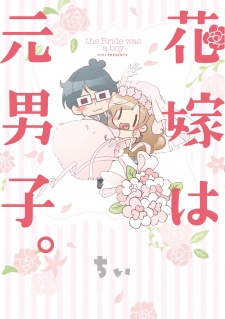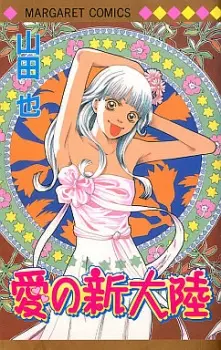Jun 26, 2016
Sexuality and gender are very complex and sensitive subjects that can mean many different things to many different people, and because of all these different and sometimes conflicting perspectives, they should be treated with particular consideration in any form of representation. Sexuality and gender are a lot more diverse than many people think. ’Heterosexuality’, ‘homosexuality’ and ‘bisexuality’ are terms that everyone who has reached a certain stage in their adolescence are familiar with, but how many have even heard of ‘pansexuality’, ‘panromantic’, ‘asexuality’, ‘aromantic’, ‘demisexuality’, ‘polysexuality’, ‘heteroflexible’, ‘homoflexible’, or ‘fluid’? Likewise, the majority probably have at least some awareness of terms such as ‘transgender’ and
...
‘transsexual’ even if they don’t know the full meaning, but how many are completely blind to words like ‘Agender (non-gender)’, ‘cisgender’, ‘genderfluid’, ‘binary gender’, 'non-binary gender', ‘gender dysphoria’, or even something as simple as ‘gender identity’?
Sexuality and gender are incredibly broad topics that the masses remain largely oblivious to, whether they are entirely comfortable with their own sexual identity and gender identity or not. It certainly doesn’t help that the terms that the majority are familiar with are the ones that carry very negative connotations in contemporary society — terms like ‘crossdresser’, drag queen’, ‘queer’, and, unfortunately enough, ‘tranny’. Even then, the full scope of these terms is not readily apparent. It becomes commonplace for the average person to absorb only the negative connotations associated with these words thanks to the media and a lack of education. People who fall into a mainstream category are liable to be disgusted by the negative connotations associated with these words and, as a result, become intolerant of these misrepresented ideas. People who do fall into a non-mainstream category and experience some form of more subtle gender dysphoria are liable to think, “I’m definitely not like them” and keep well away from the subject in the future, never quite pinpointing the root of some of their psychological or other health problems. This is one danger of half-baked knowledge in any area.
Labels are very clunky methods of communicating any complex, sensitive and abstract ideas, and the failings of this approach are made abundantly clear with the rampant ignorance regarding something as simple as the distinction between sexuality and gender. In the worst case scenario, poorly-communicated labels can close people off to a particular idea and rob them of their desire to learn more about it. Labels aren’t what people need. What people need are stories of real, raw human experience. Stories of suffering, stories of happiness and stories of finding yourself. What people need are stories like Hanayome wa Motodanshi.
Hanayome wa Motodanshi is an autobiographical account detailing the process of Chii’s MtF transition and her romantic relationship with her husband. This single-volume manga was originally based off Chii’s blog, where she talks about a variety of topics relating to gender and sexuality. Hanayome itself also touches on these same issues and sometimes even goes into great depth, but it most certainly does not neglect the romance element. Surprisingly, Hanayome is able to balance both its rather heavy themes and the romance between Chii and her husband in a light-heartedly serious and effective way, making its content very easy to swallow.
Hanayome adopts a stylised, cutesy art style that acts as a limiter for the narrative, preventing the events and themes from becoming too overbearing and heavy-handed. Hanayome is a predominately light-hearted re-telling of Chii’s MtF transition after all — it’s meant to be easy to swallow while still treating its themes seriously instead of simply shoving its ideas and opinions down reader’s throats. Because of its presentation, Hanayome is easy to read and easy to be drawn into. While the actual substance is interesting and entertaining, Hanayome’s art style is what makes it possible to enjoy the manga so much in the first place — It plays a crucial role in setting the tone and atmosphere for the rest of the manga.
Hanayome’s narrative style takes a rather unorthodox form, which seems to be a holdover from its blog roots. The events in the manga are told in flashback form, accompanied by a significant amount of narration blocks, but sometimes the narrative switches to the present, usually to provide a more direct experience for an especially critical moment. Hanayome also has at least two pages reserved at the end of any given chapter (and sometimes in the middle) for a section titled ’A Small Overview’. In this section, Chii goes into a great amount of depth explaining her perspective and experiences regarding one particular topic (‘Sex Reassignment Surgery’ is one such example of this). ‘A Small Overview’ seems to be an evolution of the infinitely blander ‘Author’s Notes,' whereas it isn’t crucial to the overall narrative, but it is still fascinating to read. The narrative style may be somewhat strange to read through at first, but it becomes very natural very quickly.
While Hanayome provides fascinating insight into sexuality and particularly gender issues, romance is also a centric part of this manga. It’s important for any narrative that contains any level of romance for it to be authentic and well-developed, and Hanayome achieves this in spades, no doubt thanks to its real life inspiration. Chii and her husband have great chemistry, and it’s always entertaining to read about their antics. They are a believable couple with believable problems. Most importantly, their depths are explored. While romance is kept out of focus for the first few chapters, it’s around half-way through that it is brought to the forefront. It’s here that their relationship becomes more serious and small elements of drama start to creep in. Hanayome may be predominately light-hearted, but it can certainly do drama very well when it wants to; it just doesn’t do it very often. This series’ biggest accomplishment is how well it handles the development of the couple’s relationship throughout. Hanayome is something of a balancing act between its themes and its romance, but by the end, romance seems to be weighed most heavily.
Hanayome wa Motodanshi is a light-heartedly serious take on sexuality and gender from just one person’s perspective, but it is also a beautiful story of romance. Hanayome could have used more room for its romance to breathe, but it was handled exceptionally well in the limited time it had. Likewise, Hanayome could have done more with its themes, but nine chapters were entirely sufficient to craft an engaging and well-paced narrative that provokes a diverse palette of emotions. Hanayome is an insightful, entertaining and definitively personal story that most certainly deserves a read no matter who you are, what sexual orientation you fall under or what gender you identify as. Hanayome is just one story of real human experience, but it isn’t one that is easily forgotten.
Reviewer’s Rating: 8
What did you think of this review?
Nice
 39
39
Love it
 0
0
Funny
 2
2
Confusing
 0
0
Well-written
 4
4
Creative
 0
0Show all

























![Q4 2017 Anime & Manga Licenses [Update 12/23]](https://cdn.myanimelist.net/r/50x78/s/common/uploaded_files/1506711459-312b42bb5679de27f5e052bbc95ce478.jpeg?s=92481c01a766e65b8116f4d3d8c45a8d)
